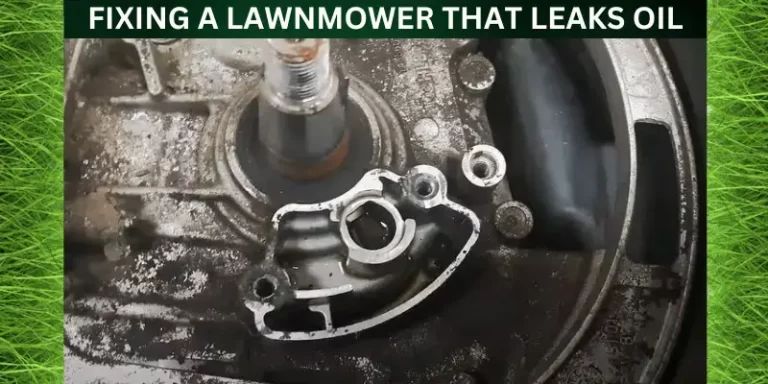How to Change the Oil in Your Lawn Mower
Regular oil changes are essential for keeping your lawn mower in peak condition. By maintaining your mower’s engine with fresh oil, you extend its life, improve performance, and reduce the likelihood of costly repairs. Whether you’re a lawn care novice or a seasoned expert, this guide will help you change the oil in your lawn mower efficiently and safely.
What You’ll Need
Before you start, gather the necessary supplies to ensure a smooth oil change process. Here’s a list of what you’ll need:
- Fresh engine oil (check the owner’s manual for the specific type and amount)
- Oil filter wrench (optional, but recommended)
- Drain pan
- Funnel
- Rags
- Safety glasses (optional, but recommended)
- Work gloves (optional, but recommended)
Consulting your owner’s manual is important. It provides specific details about the type and capacity of oil required for your lawn mower. If you’re unsure how to find your manual, there are online resources available to help you locate it.
Pro Tip: Using safety glasses and work gloves can add an extra layer of protection, keeping your hands clean and your eyes safe from oil splashes.
Warm Up for Smooth Draining (Optional)
Warming up the engine before draining the oil can help it flow more easily. This step is optional, but it’s worth considering if your owner’s manual recommends it.
Typically, running the mower for a few minutes is sufficient to warm up the engine. Be sure to follow the manufacturer’s instructions for the recommended warm-up time to avoid overheating or any potential hazards.
Safety First: Disabling the Spark Plug
Safety should always be your top priority during any maintenance task. To prevent the accidental starting of the engine, it’s essential to disconnect the spark plug wire before beginning the oil change.
To do this, locate the spark plug wire, which is usually found on the side or top of the engine. Gently pull the wire off the spark plug, ensuring it’s completely disconnected. This simple step can prevent unexpected engine starts, keeping you safe throughout the process.
Draining the Old Oil: Step-by-Step Like a Pro
Draining the old oil from your lawn mower is a critical part of the oil change process. Follow these detailed steps to ensure a smooth and efficient oil drain:
Locate the Oil Drain Plug
Refer to your owner’s manual to find the exact location of the oil drain plug. It is typically found beneath the engine, either on the side or at the bottom. Some mowers may have a drain valve instead of a plug.
Position the Lawn Mower Properly
Place your lawn mower on a flat, level surface. This ensures that all the oil can drain out evenly. For some models, tilting the mower slightly towards the drain plug can help facilitate the oil flow.
Prepare the Drain Pan
Position a drain pan directly under the oil drain plug to catch all the used oil. If the drain plug is in a hard-to-reach place, you might need to use a smaller container initially and then transfer the oil to a larger pan.
Loosen the Oil Fill Cap
Before you start draining, remove or loosen the oil fill cap on the top of the engine. This step helps the oil to drain more smoothly by preventing a vacuum from forming inside the engine.
Loosen the Drain Plug
Using the appropriate wrench or socket, carefully loosen the oil drain plug. Be prepared for hot oil if the engine was warmed up earlier. Slowly unscrew the plug and allow the oil to begin flowing into the drain pan.
Drain the Oil Completely
Let the oil drain completely into the pan. This might take several minutes, so be patient. You can gently tilt the mower back and forth to ensure all the oil is expelled. Make sure to capture all the oil, as any residue left behind can contaminate the fresh oil.
Clean Up
Once the oil has finished draining, use rags to wipe away any spills around the drain plug area. This helps keep your workspace clean and prevents any old oil from mixing with the new oil.
Inspect the Drain Plug and Washer
While the oil is draining, inspect the drain plug and its washer (if equipped) for any signs of wear or damage. A worn-out washer can cause leaks. Replace them if necessary.
Reinstall the Drain Plug
After ensuring all the old oil has drained out, securely reinstall the drain plug. Tighten it with a wrench, but be careful not to overtighten it, as this can strip the threads or damage the plug.
Double-Check for Leaks
Once the drain plug is in place, double-check for any signs of leaks around the plug area. This step ensures that everything is sealed properly before adding new oil.
Pro Tip: To keep your work area tidy, place a piece of cardboard or an old sheet under the drain pan. This will catch any drips or spills, especially if you’re working on an uneven surface. Additionally, having a few extra rags on hand can help with quick clean-ups.
Read More Best Oil for Lawnmowers
Replacing the Oil Filter: A Fresh Start
Locate the oil filter by consulting your owner’s manual. This will typically be situated near the engine block.
Place a rag underneath the filter to catch any spills during removal. Start by attempting to unscrew the old filter by hand. If it’s too tight, use an oil filter wrench to loosen and remove it. This ensures that your lawn mower starts fresh with a new filter, improving its performance.
Filling Up with Fresh Oil: Give Your Engine a Drink
First, check your owner’s manual for the exact oil capacity of your lawn mower. This step ensures you don’t overfill or underfill the engine with oil.
Using a funnel, slowly pour the new oil into the oil fill hole, taking care to avoid spills. After adding the oil, check the level with the dipstick. Gradually add more oil if necessary until it reaches the recommended level on the dipstick. This careful approach ensures your engine has the right amount of oil for optimal performance.
Wrapping Up: Disposal and Final Touches
Proper disposal of used oil is essential. Avoid pouring it down drains or onto the ground. Instead, take the old oil to a recycling center or an automotive store that accepts used oil.
Once you’ve disposed of the old oil, reconnect the spark plug wire securely. Start the engine and check for any leaks around the drain plug and filter. This final step confirms that everything is in place and working correctly.
Frequently Asked Questions (FAQs)
What is the importance of changing the oil in a lawn mower?
Changing the oil in a lawn mower is essential for maintaining its engine and ensuring proper lubrication for smooth operations.
How often should I change the oil in my lawn mower?
It is recommended to change the oil in your lawn mower every 50 hours of use or at least once a season, depending on how frequently you use it.
What are the steps involved in changing the oil in a lawn mower?
The basic steps include draining the old oil, replacing the oil filter if needed, refilling with fresh oil, and checking the oil level.
What type of oil should I use for my lawn mower?
Typically, a high-quality SAE 30 motor oil is recommended for most lawnmowers. However, always refer to your mower’s manual for specific oil recommendations.
How do I dispose of the old oil from my lawn mower?
It is important to dispose of the old oil properly by taking it to a recycling center or a designated oil disposal site to prevent environmental contamination.
Why is it essential to check the oil level in a lawn mower regularly?
Checking the oil level helps ensure that there is enough lubrication for the engine and that the mower operates efficiently without any damage due to low oil levels.
What equipment do I need to change the oil in my lawn mower?
You will need an oil pan, a socket wrench or pliers to remove the drain plug, a funnel for refilling the oil, and the appropriate type of fresh oil for your mower.
Conclusion
Congratulations on successfully changing the oil in your lawn mower! Regular oil changes are crucial for maintaining your mower’s performance and longevity. By following these steps, you’ve ensured your lawn mower will run smoothly all season.

About Naveed A Hashmi
In my childhood, I used to see my parents while working in the land, for these reasons today I have been serving the same as our own tradition and culture. I thus love to stay in it, because I want to learn something advanced and new so that I may improve my farm’s contour and help others with my experience.







